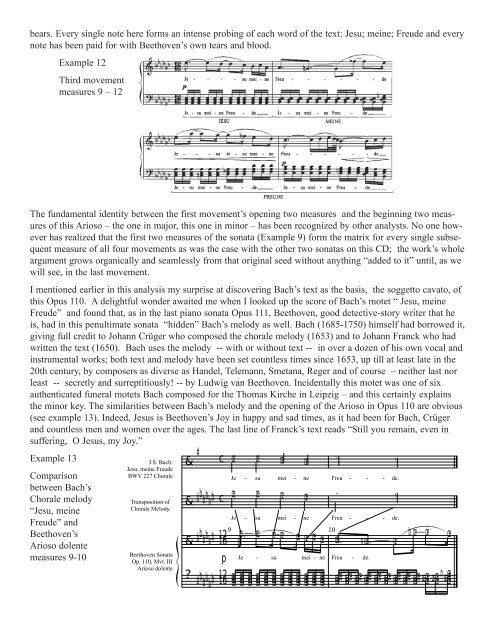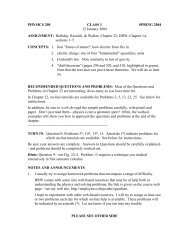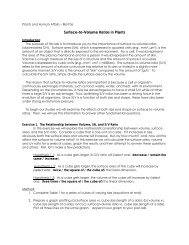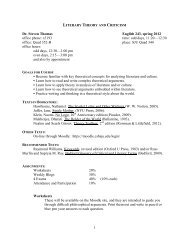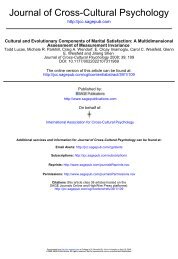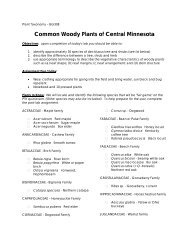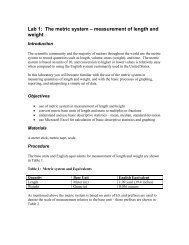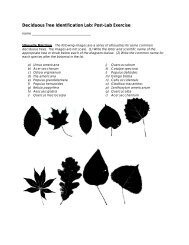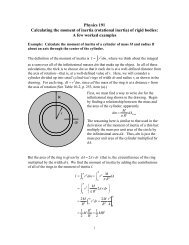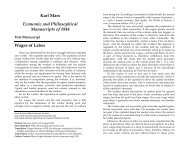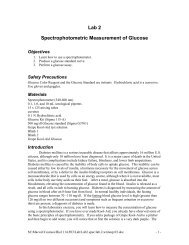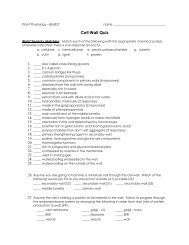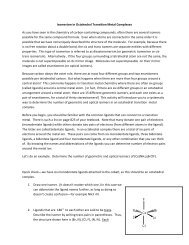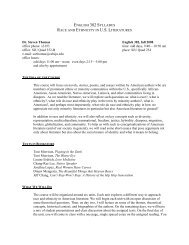A Beethoven Triptych - Employees Csbsju
A Beethoven Triptych - Employees Csbsju
A Beethoven Triptych - Employees Csbsju
You also want an ePaper? Increase the reach of your titles
YUMPU automatically turns print PDFs into web optimized ePapers that Google loves.
ears. Every single note here forms an intense probing of each word of the text: Jesu; meine; Freude and every<br />
note has been paid for with <strong>Beethoven</strong>’s own tears and blood.<br />
Example 12<br />
Third movement<br />
measures 9 – 12<br />
The fundamental identity between the first movement’s opening two measures and the beginning two measures<br />
of this Arioso – the one in major, this one in minor – has been recognized by other analysts. No one however<br />
has realized that the first two measures of the sonata (Example 9) form the matrix for every single subsequent<br />
measure of all four movements as was the case with the other two sonatas on this CD; the work’s whole<br />
argument grows organically and seamlessly from that original seed without anything “added to it” until, as we<br />
will see, in the last movement.<br />
I mentioned earlier in this analysis my surprise at discovering Bach’s text as the basis, the soggetto cavato, of<br />
this Opus 110. A delightful wonder awaited me when I looked up the score of Bach’s motet “ Jesu, meine<br />
Freude” and found that, as in the last piano sonata Opus 111, <strong>Beethoven</strong>, good detective-story writer that he<br />
is, had in this penultimate sonata “hidden” Bach’s melody as well. Bach (1685-1750) himself had borrowed it,<br />
giving full credit to Johann Crüger who composed the chorale melody (1653) and to Johann Franck who had<br />
written the text (1650). Bach uses the melody -- with or without text -- in over a dozen of his own vocal and<br />
instrumental works; both text and melody have been set countless times since 1653, up till at least late in the<br />
20th century, by composers as diverse as Handel, Telemann, Smetana, Reger and of course – neither last nor<br />
least -- secretly and surreptitiously! -- by Ludwig van <strong>Beethoven</strong>. Incidentally this motet was one of six<br />
authenticated funeral motets Bach composed for the Thomas Kirche in Leipzig – and this certainly explains<br />
the minor key. The similarities between Bach’s melody and the opening of the Arioso in Opus 110 are obvious<br />
(see example 13). Indeed, Jesus is <strong>Beethoven</strong>’s Joy in happy and sad times, as it had been for Bach, Crüger<br />
and countless men and women over the ages. The last line of Franck’s text reads “Still you remain, even in<br />
suffering, O Jesus, my Joy.”<br />
Example 13<br />
Comparison<br />
between Bach’s<br />
Chorale melody<br />
“Jesu, meine<br />
Freude” and<br />
<strong>Beethoven</strong>’s<br />
Arioso dolente<br />
measures 9-10<br />
J.S. Bach:<br />
Jesu, meine Freude<br />
BWV 227 Chorale<br />
Transposition of<br />
Chorale Melody<br />
<strong>Beethoven</strong> Sonata<br />
Op. 110, Mvt. III<br />
Arioso dolente<br />
#<br />
& c œ œ œ œ<br />
Je - su mei - ne<br />
& b b b b b b c œ œ œ œ<br />
Je - su mei - ne<br />
& b b b b b b 12 œ.<br />
œ œ œ<br />
16 J œ œ œ œ<br />
p<br />
Je - su mei - ne<br />
<br />
b b b b b b 16<br />
12<br />
œ œ œ œ œ œ œ œ œ œ œ œ<br />
9 10<br />
˙<br />
˙<br />
Freu - - - de.<br />
˙<br />
˙<br />
Freu - - - de.<br />
œ . nœ.<br />
Freu - de.<br />
œ œ<br />
œ œ<br />
œ œ<br />
œ œ<br />
œ œ<br />
œ œ<br />
œ<br />
œ œ<br />
œ œ<br />
b œ œ œ<br />
œœ œœ œ n œ œ<br />
œœ<br />
œ


